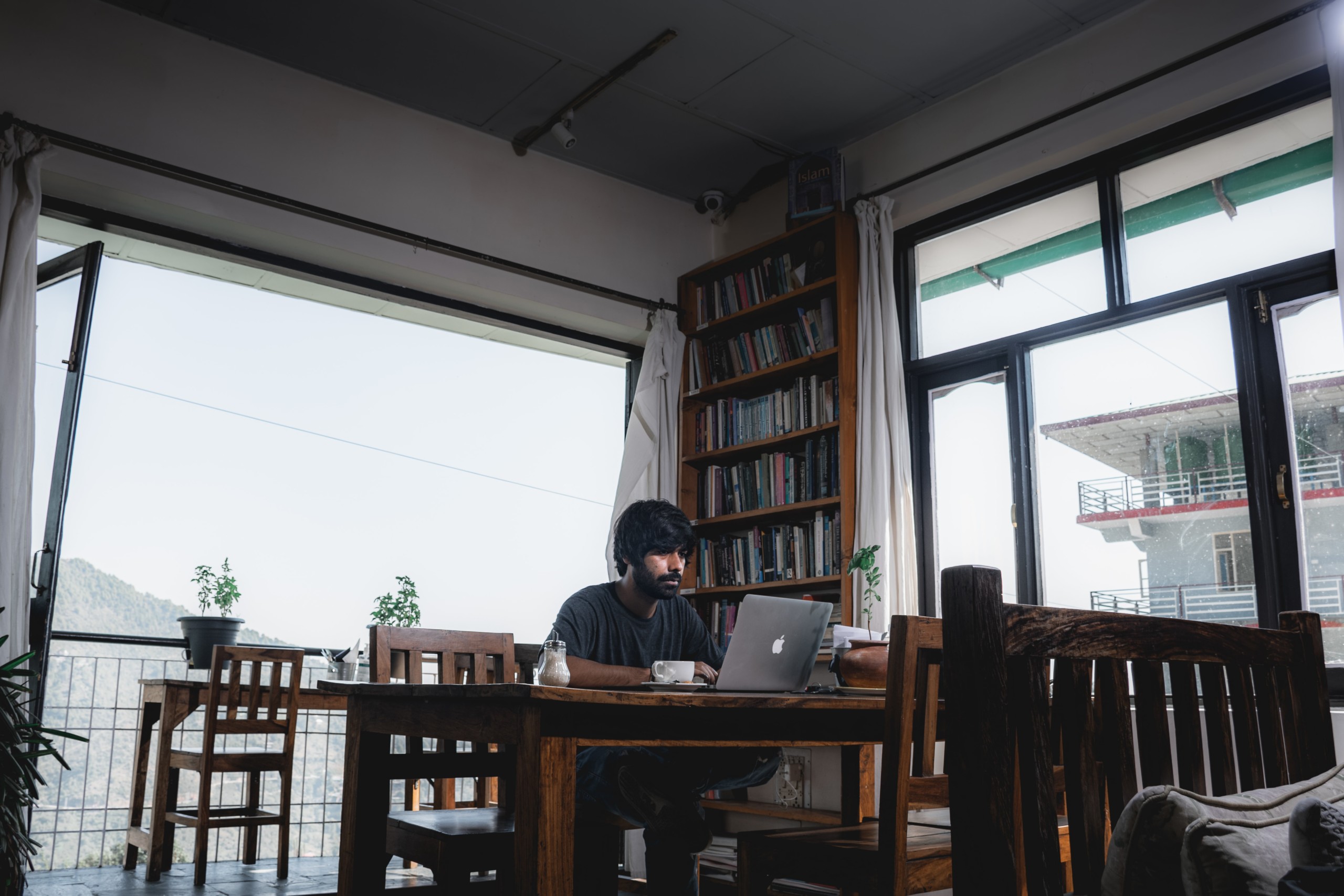
Deeksha Puri, student at Ashoka University
What makes a house different from a ‘home’? Our renderings of ‘home’ are often represented by the affects evoked by it — one that can significantly transform the four, ordinary walls that envelop us into a place of comfort and solace or, for others, something quite different. In looking at the home in such a way, it is natural that the home as a space, both physically and emotionally, has a large role to play in who we are, what we feel, and where we feel most comfortable sharing bits about ourselves. Home becomes a highly transformative space that shapes our mental health, and one that is shaped by the world outside, as has been the case during the pandemic.
The Self At Home
‘Home,’ in its many iterations, is also seen as an extension of the self. However, does a transition from the ‘home’ to the ‘outside’ cause the self to change, or does it remain intact?
For many, a duality exists as they cross these boundaries — between who they are and who they perceive themselves to be, in both these settings. Shekhar et al. (2020), while studying secondary school students in Jammu, maintain that there is an important relationship between home environment and one’s self-concept. This suggests that the manner in which the ‘self’ is conceptualized and presented can substantially differ across different home environments. Often, students also feel as though they have to shield or hide certain parts of themselves at home, for a multitude of reasons such as a fear of non-acceptance or a lack of understanding.
An Ashokan student who wishes to remain anonymous mentions, “In some instances, I’d not be comfortable discussing certain matters at home, but I would be with my closest friends.” When asked if there was anything specific that they shared with their friends more than family, they mentioned academic stress. “I want to be able to show my family that I’m doing well academically, but when things are not going as planned, or are harder than I imagined, then it’s not something I necessarily bring up with them. As far as academic stress is concerned, I’m a lot more comfortable sharing that with friends or other people at Ashoka because they’re going through the same thing.”
As one crosses the physical boundaries between home and outside, they also cross boundaries within multitudes of themself. This is most seen with self-disclosure; who one should disclose to, and what information should be shared, is a dilemma that is understood differentially across cultural boundaries as well. Chen (1995) maintains that individuals living in countries like America tend to show a higher degree of self-disclosure to parents, acquaintances and intimate friends, as opposed to individuals who live in cultures like that of China. In this sense, how the self comes to be presented isn’t just a question of the home as a space, but also the larger socio-cultural context the home is placed in.

Promiti Mitra, student at Ashoka University
Confidentiality & Privacy
It is imperative to understand how mental health cannot exist without the pillars of confidentiality and privacy. Saurabh & Ranjan (2020) note that worry, helplessness, and fear ran high among adolescents during the pandemic. In such situations, having a space that is only one’s own becomes pertinent so that one can get away from the world when it gets too overwhelming. What complicates this matter further is the fact that this outlet and space is taken away given the unprecedented circumstances we live in. Given the situation of the pandemic ushering many to being confined to their homes, it becomes increasingly difficult to maintain the boundaries between the familial and the personal.
“When I’m at home it often feels like my privacy is breached quite often,” mentions Lakshya Sharma, another Ashokan student. He adds particular instances where he felt frustrated, “Sometimes I’m sitting in a room, and somebody just enters, and they start asking tons of questions. I don’t want to answer all of that. You’ve entered my room without my permission, and I’m sitting here because I want to sit here.” Living in close proximal spaces with one’s family can thus make matters troublesome, especially when both mental and physical spaces feel like they are encroached upon.
Family structure can also affect the degree to which individuals are able to exercise their own space, given the restrictions on stepping outside the home. This can also exacerbate this boundary-blurring, resulting in significant mental health concerns. Rodriguez-Rey et al. (2020) note a relationship between the number of people in a household and the subsequent stress felt during the pandemic in Spain, with Anand et al. (2021) also mentioning how joint-family structures can often be predictors of psychological distress in India. All of these factors become imperative to look at when assessing how the home switches between being either a safe space or an uncomfortable one.
Family Duties & Responsibilities
The structure of a family and the responsibility each member undertakes is heavily influenced by gender as well as culture. Most cultures in the world are built around the division of labour inside the house as well as outside. This division of labour is extremely gendered, with women confined to the domestic space and men expected to provide for the family financially. Even when the female members of the family are employed, they are expected to finish the household duties along with their work outside. According to an article by Cerrato & Cefire (2018), this gender ideology determines what is right for a man and a woman and judges their conduct on the basis of the tasks that they perform. This pattern continues in most households in India. While this system of labour division is widely accepted and practised, it often leads to women being underappreciated for the household work. The pandemic has, however, brought about a change, especially because of the imposition of lockdown and work from home orders. During the lockdown, members of the family had increased household responsibilities. Men and children started contributing to the household work due to the absence of domestic workers.
An anonymous Ashokan student said that doing household chores was “really tedious […] it came with the acknowledgement of how much work there is and how much (of it) tends to be overshadowed.” She also mentioned that doing household chores made her father more prepared to assume household responsibilities when her mother caught Covid.
For Lakshya, his responsibilities increased as he took on his father’s tasks. Thus running errands and the increasing academic pressure led to him feeling impatient and aggressive. These responsibilities tend to differ across cultures. Lakshya believes that due to these differences, living in the west is actually better. “If you live in a western culture, you can say ‘no,’ you can put your priorities first, but in the Indian culture, there is no option of saying ‘no.’” This belief actually holds some truth in it. Chadda & Deb (2013) mention, “Unlike the western society, which puts the impetus on “individualism,” the Indian society is “collectivistic” in that it promotes interdependence and cooperation, with the family forming the focal point of this social structure.” In keeping in mind the interests of others, individuals often find themselves with very little agency over their duties and responsibilities. This lack of agency might feel overburdening and overwhelming for some.
What happens at home, stays at home. While this norm protects families from the judgments of outsiders, it might lead to a decline in mental health as it promotes bottling up feelings and not sharing them.
Certain cultural norms can increase this feeling. One such norm that governs the conversations that take place in the household is: what happens at home, stays at home. While this norm protects families from the judgments of outsiders, it might lead to a decline in mental health as it promotes bottling up feelings and not sharing them. Thus, family and the cultural norms surrounding it can be a source of stigma. In a research article by Mahomed et al. (2019) including mental health service users, 14 of the 17 participants faced stigmatization by family members in various forms.
Acceptance & Seeking Support
While opening up about family problems to other people is not widely accepted or appreciated in India, talking about mental health problems within a family is becoming increasingly acceptable. Many parents understand the importance of mental well-being and are open to talking about mental health.
A student who wishes to be anonymous says: “My mother is very understanding about the importance of having conversations about mental health […] I could always talk to her if I wanted to.” Lakshya says that his mother is very supportive of him when he talks about mental health issues that he faces.
While close family members are more open to talking about mental health issues, this topic is still stigmatized beyond the four walls of the house. Extended family members often view this topic as taboo and pass comments and are judgmental when someone opens up about their mental health issues.
Lakshya says: “I do not usually communicate well with my extended family, as they are more conservative than my parents […] I usually don’t talk about this (mental health) with them because it might end up in an argument.” But this dynamic can cut both ways. While conversations about mental health might not be acceptable in some extended families, research shows that close relationships with extended family decreased symptoms of anxiety and depression (Crowell et al., 2014).
The pandemic shed light on the importance of mental health issues and household among family members. Although the pandemic has not brought about significant changes in the division of responsibilities for the long term, it has opened up conversations around this topic.
Culture and gender both have an important role in determining the responsibilities and the experiences one has at home. Within the same culture, different families have different systems, which also changes how one experiences their home. The one commonality across all families, cultures, and genders, however, is the concerns that people have. This includes the “self” at home, how they interact with other members of the family, how their privacy and personal space is respected as well as the responsibilities that they must fulfill. Moreover, everybody wants a space to understand and to be understood and a home is a space where many people find such support.




